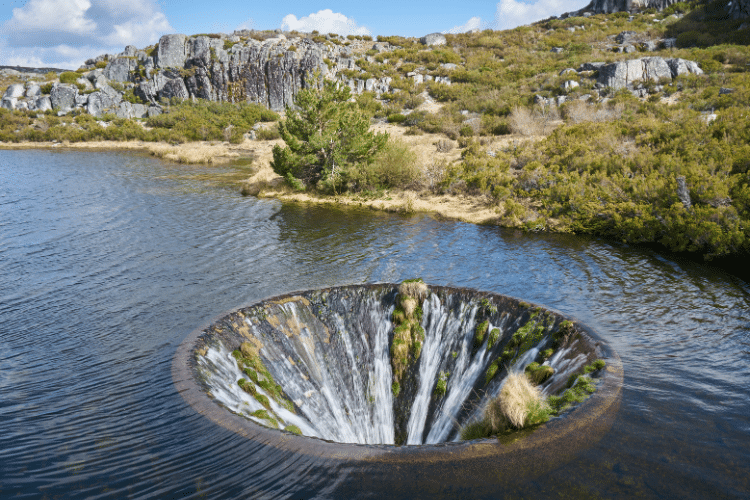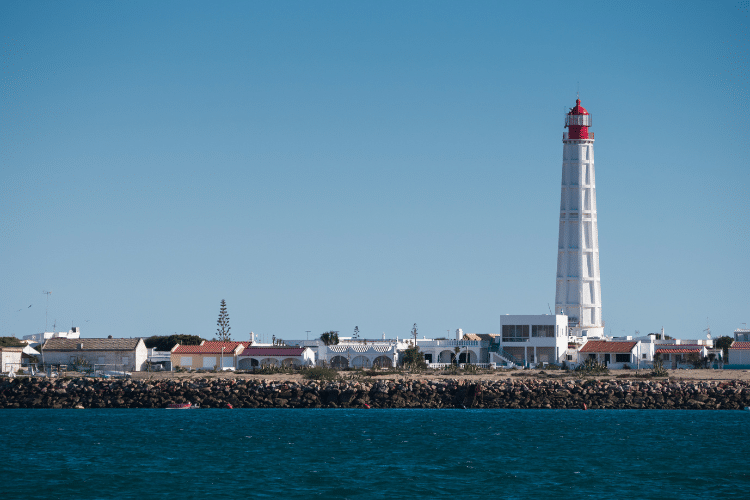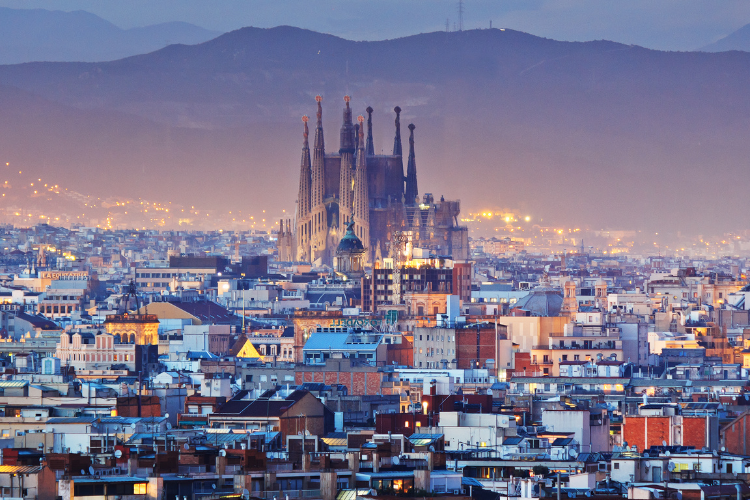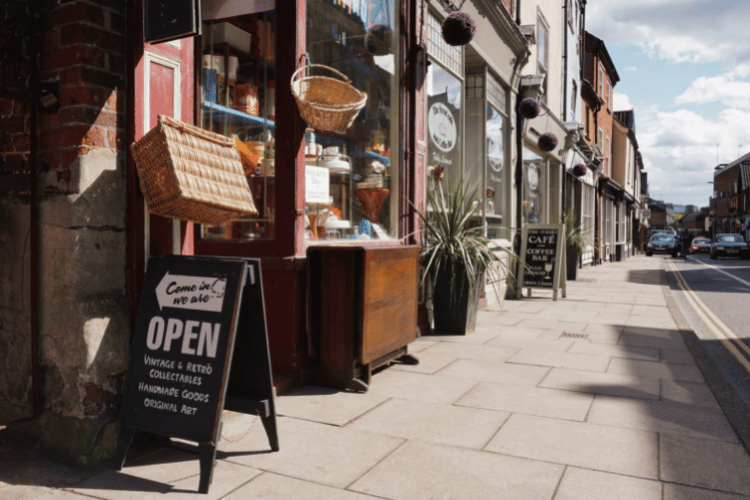Last Updated on April 24, 2024 by
Portugal has become well known throughout the world, and there are plenty of good reasons. But what about those hidden pearls and off-the-beaten-path locations? And the dishes no one talks about? In this article, you’ll get to know the most amazing and well-kept secrets of Portugal. Join us in the unknown!
Secrets of Portugal and what everybody knows
Portugal is very popular now, for many reasons.
You will easily find online the greatest hotspots for partying, surfing, or just having a good time in Portugal. People often come across the lively sprouting of new veins in our century-old culture in Lisbon, where Fado meets the Bossa Nova and other incredible types of music from Portuguese-speaking countries.
You will find beautiful, wild beaches and steps of vineyards that gently flow inwards as if inviting the river to bathe them; you will find iconic places in our biggest cities.
Well, in this article, we won’t be talking about any of such places. As a matter of fact, I’m not particularly interested in offering you the conventional and famous perks of Portugal.
I’m, on the other hand, keen on opening Pandora’s Box and displaying in front of your very eyes the most well-kept secrets of Portugal.
Without further ado, let’s delve into places, dishes, and stories you most likely don’t know:
Marvão
Built on a steep inclination of more than 800 meters, this fortified village is a small wonder that still lives after its main purpose has died out. To be a fortified, strategic point of defense against Spain.
What is left, now, is a gently kept town full of humorous Alentejanos, that will receive you with open arms.

You will get to taste all the wonderful dishes from the Alentejo region and look through one of the highest spots in the region. A really marvelous scenic portrait of the long plains of Alentejo.
Visiting the museum, you will also get to know a tiny bit more about the Spanish and Portuguese quarrels.
The Alentejanos, known for their warm hospitality, greet you with cheerful smiles and fascinating tales of the village’s history. It’s safe to say Marvão is one of the best well-kept secrets of Portugal for sure.
If you’re fond of museums and history, indulge in the museum’s exhibits, unraveling the rich tapestry of Spanish and Portuguese conflicts. You will learn a lot about Portuguese history and the differences between the cultures.
- Learn the differences between the two countries by reading our article Portugal Or Spain? Compare Which Country Is Better For Expats To Live In.
Piódão
Called the Christmas crib of Portugal, you can’t get a more picturesque town in Portugal even if you tried.
Built in a seemingly inhospitable land between Coimbra and Covilhã, most houses are built from schist, except the town’s church. It is painted in a glazing white, setting it apart from the rest of the houses.

Hard to get there even now – you might want to go by bus, as the accesses are quite difficult – one can only assume how people even got there in the first place.
There are plenty of myths about Piódão, with some guaranteeing that there was once a king that was exiled there. Also, others believe that the creation of the town involved killing a giant snake. One is left to wonder if the giant snake was, and is, the curvy river that flows under the town.
Anyway, if you go there now, you will find no trouble finding accommodation, hospitality, fine dishes, and plenty of unturned forests to explore. And let’s not forget to mention the homemade liquors that will probably make you drink just a tiny bit more.
If you were to go there today, don’t miss the chance to savor their homemade liquors, leaving you with a lingering taste of this captivating town.
- You will also like to read: 15 Curious Things About Portugal You Probably Didn’t Know.
Fraga da Pena
Pena, although seemingly similar (and close) to Piódão, needs to make the list simply because of how desolate it is. The 5 people who live there are happy to receive you and treat you with endemic wine and chouriço.

You will also have a lot of paths to travel into the wild and realize how hard it was to make a living here in medieval times.
When I was visiting, once, I just gasped “This is a truly beautiful place to live in”, and a modest old lady, smiling, responded in a fashion that stuck with me forever: “Yes, for a couple of days.”
Fraga da Pena, unlike its nearby counterpart Piódão, stands out for its remote and solitary existence. As you embark on the numerous untamed trails, you gain a profound appreciation for the hardships endured by those who once called this place home in medieval times. It’s a sight to see, but also to cherish.
Macário Mountain Range
Saint Macário was a hermit on the now Macário Mountain Range.
As the legend goes, as a young man, he was an avid consumer of all things earthly. He enjoyed parties, large hunts, and more than a couple of cups of wine.
After accidentally killing his father on a hunting trip, he secluded to the mountain and devoted himself to prayer and the protection of wildlife.

It is said that he would pick up his embers and travel downwards the mountain to offer them to people, for them to set their own fires. The embers would travel kilometers in his bare hands.
Apart from the dazzling scenery, which is particularly beautiful, you get to visit a shrine where he lived, which is now a small church for those devoted to this saint.
If you decide to visit, it won’t be hard to learn more about the legend.
Boca do Inferno
Near Lisbon, although quite pretty, this one place is more about the legend than the place itself.
If you have a particular interest in Portugal, you already know Fernando Pessoa was the most prolific and generally considered the best Portuguese writer to have ever lived.

What you don’t know, is that he was also keen on learning the occult arts, doing a lot of horoscopes, and even trading letters with some of the most influential occult practitioners of the time, including the World’s Worst Man: Aleister Crowley.
What probably even most Portuguese don’t know is that Aleister Crowley faked his suicide right here, in Boca do Inferno, with the help of Fernando Pessoa.
After a police investigation, the inspectors learned about Fernando Pessoa’s connection to Aleister Crowley. When they asked Pessoa if he knew something about the suspected homicide, he told the police: “I may have seen his ghost somewhere around Lisbon.”
Let’s Move to Europe
With Viv Europe your plans for Europe will come to a reality
Cãvao dos Conchos
From the looks of it, you’d think it’s a portal to another dimension. But this sinkhole is an artificial funnel in the Serra da Estrela mountains.
The reason why this opening looks so natural is that there are very few manmade designs made nearby. Inside the Cãvao dos Conchos is a tunnel that collects water when the water level rises and distributes it to nearby communities.
The Serra da Estrela natural park is also home to Portugal’s highest mountain range – perfect for an adventurous hiker to explore.

Culatra Island
This small and hidden gem can be seen from a plane on the way to the Algarve’s capital, Faro. You do not need cars to explore this island; the area is only accessible by boat or catamaran.
Needless to say, Culatra Island is one of the most peaceful places, and the fresh air will instantly energize you. You can laze around if you wish to. Or spend a nice day exploring all this Island offers.
It’s located in Olhão, so you can book a flight to Faro and then book a sailing trip. If you like swimming or diving in crystal clear waters, this is the place to go.

Portuguese Haggis: Morcela
Morcela is a dish most famous in the central areas, but yet one of the best-kept secrets of Portugal. We, too, had the idea of stuffing intestines with a bunch of meat and just going ahead and eating it.
If you are into exotic dishes, Morcela is something you can’t miss out on.

Yes, it has a bit of flour, but the main ingredient, apart from some grease, is blood. Yes, Morcela is mainly cooked blood on an intestine layer. And it is, dare I say, magnificent.
Cabidela de Lampreia
Since we are talking about blood, why not talk about Cabidela de Lampreia?
The Portuguese tend to use chicken’s and rabbit’s blood while cooking rice. However, Lampreia is a seasonal and relatively expensive, and iconic dish. When Spring comes, most people don’t miss out.

Lampreia, or, as you know it, lamprey, is an ugly river fish, gelatinous and difficult to explain when it comes to talking about the flavor.
But, if you’re a daring fellow, I suggest you try it at least once.
There is plenty more to know about Portugal
This article is by no means a full disclosure of the Portuguese phenomenon. We could talk about stories, places, legends, dishes, and secrets of Portugal all day.
Those I mentioned above are simply some of the places and dishes you probably won’t get in most articles about Portugal, which is, quite frankly, sad.
As small as Portugal is, there’s just so much more to discover apart from the hubs everyone knows about. You will definitely be stunned by the secrets of Portugal.
Discover Portugal in all its idiosyncrasies, and you may rediscover an even grander love for this small, sea-planted garden.
When you do get to live in Portugal, make sure to dive into our culture and essence. If you’re stuck with your relocation process, book a consultation with Viv Europe and let experts guide you!
Also consider joining our Facebook Group – All About Portugal For Expats to get to know others in the same position as you and never miss another article from us!





